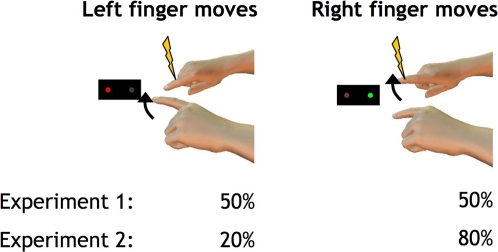Figure 1. Experimental setup for both experiments: Subjects are moving either the left or right index finger in response to a visual go signal (red cue – left finger, green cue – right finger; assignment of cues randomised over subjects).
At various intervals relative to the visual cue (−200, −100, −50 and triggered by movement onset in experiment 1, at −50 ms in experiment 2), the right finger was stimulated with a brief electrical shock of varying intensities (yellow arrow), the left little finger received a simultaneous shock (not shown) of a fixed intensity (150% detection threshold for each individual subject) which served as the reference in the forced-choice paradigm. In experiment 1, visual cues appeared equiprobable for both left and right finger movements in random order; in experiment 2, right cues were 4 times more probable than left cues.

